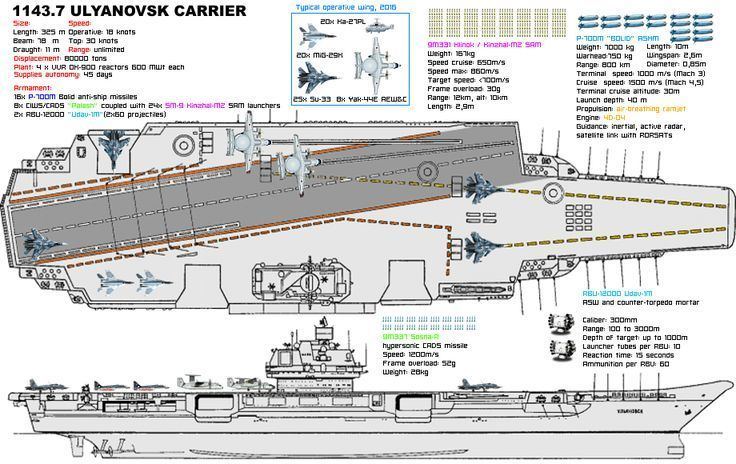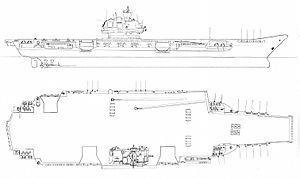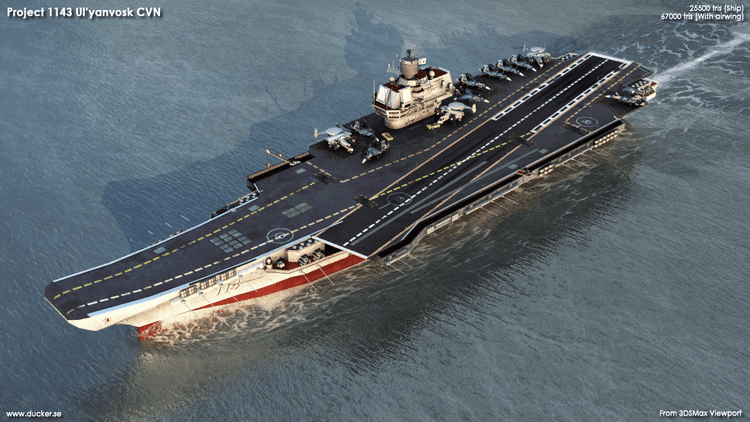Name Ulyanovsk class Preceded by Kuznetsov class Planned 1 Length 325 m Builder Black Sea Shipyard | Operators Soviet Navy Succeeded by Project 23000E Construction started 25 November 1988 Draft 11 m | |
 | ||
Builders Chernomorsky Shipyard 444 | ||
Soviet aircraft carrier ulyanovsk
Ulyanovsk (Russian: Улья́новск; [ʊˈlʲjanəfsk]) was begun as the first of a class of Soviet nuclear-powered supercarriers but was abandoned before completion intended for the first time to offer true blue water aviation capability for the Soviet Navy.
Contents

Design

Ulyanovsk was based upon the 1975 Project 1153 OREL, which did not get beyond blueprints. The initial commissioned name was to be Kremlin, but was later given the name Ulyanovsk after the Soviet town of Ulyanovsk, which was originally named Simbirsk but later renamed after Vladimir Lenin's original name because he was born there.

It would have been 85,000 tonnes in displacement (larger than the older Forrestal-class carriers but smaller than contemporary Nimitz class of the U.S. Navy). Ulyanovsk would have been able to launch the full range of fixed-wing carrier aircraft, as it was equipped with two catapults as well as a ski jump. The configuration would have been very similar to U.S. Navy carriers though with the typical Soviet practice of adding anti-ship missile (ASM) and surface-to-air missile (SAM) launchers. Its hull was laid down in 1988, but construction was cancelled at 20% complete in January 1991 and a planned second unit was never laid down. Scrapping began on 4 February 1992 and was completed by the end of October 1992.

The People's Republic of China is expected to build two nuclear aircraft carriers based on the Project 1143.7 Ulyanovsk-class design for some of PLAN's future carriers.
Air Group
The Ulyanovsk air group was to include 68 aircraft with the following planned composition:

The ship was equipped with two "Mayak" steam catapults made by the Proletarian factory, a ski-jump, and 4 arresting gear. For storage of aircraft, it had a 175×32×7.9-m hangar deck with aircraft elevated to the flight deck by 3 elevators with carrying capacities of 50 tons (two on the starboard side and one on the port). The stern housed the "Luna" optical landing guidance system.
